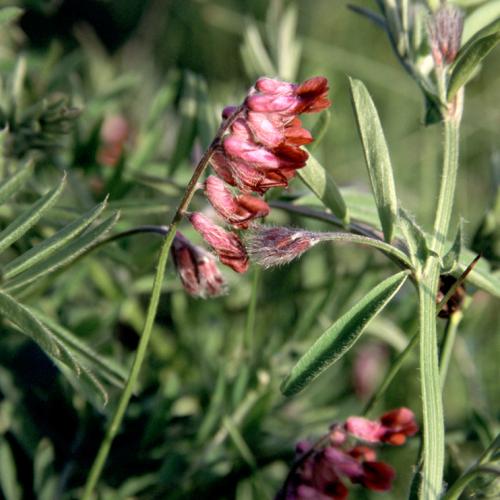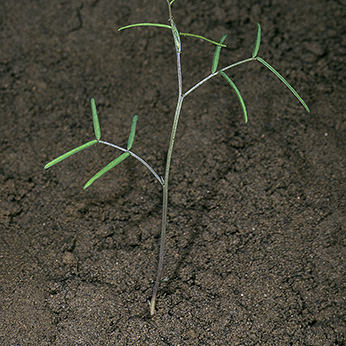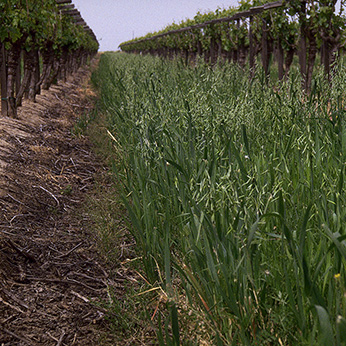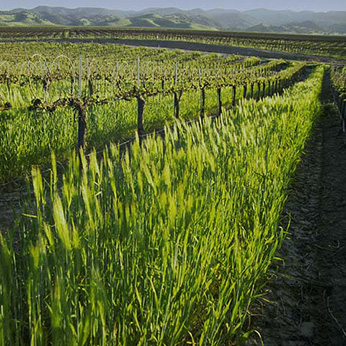Cover crops can be broadly defined as any non-cash crop grown in addition to the primary cash crop.
These crops have the potential to increase soil organic matter and fertility, reduce erosion, improve soil structure, promote water infiltration, and limit pest and disease outbreaks. There are numerous benefits to cover cropping, though, as with any management technique, there are tradeoffs and limitations that must be considered. In many situations cover cropping can lead to a decreased reliance on fossil fuels and improved agricultural productivity.
Overview

Cover cropping was extensively used around the country in the first half of the 20th century. With the development of selective pre- and post-emergent herbicides, many farmers transitioned away from growing cover crops in the 1950s. In recent years the increased focus on soil quality and reducing chemical inputs has led to a renewed interest in the potential benefits of including cover crops in an agricultural production system.
Some reasons to implement cover crops into a crop management regime include to slow erosion, improve soil health, enhance water infiltration, smother weeds, control pests and diseases, and increase biodiversity. For organic farmers and farms that do not rely on chemical applications of fertilizer, a common reason for growing cover crops is to add nitrogen to the soil; leguminous cover crops can provide a substantial amount of nitrogen. Crops planted following a cover crop can more readily utilize this plant-available form of nitrogen. Conventional farming systems may include cover crops as a method of increasing soil organic matter and improving the physical structure of the soil. In these situations, farmers may choose rapidly growing grasses or species with extensive root systems as a cover crop.
One of the most critical factors for implementing a successful cover crop management program is determining the objectives and function of a chosen cover crop. Site specification, timing, and cropping history are all factors in choosing the most appropriate cover crop species to introduce into a system.
Though there is literature supporting the numerous benefits of introducing cover crops into a system, there are also challenges that growers may face in implementation or management. Particularly in arid or drought-prone environments, the water needs by cover crops may cause a reduction in the amount available to the main crop, or require the use of supplemental irrigation. In these situations it is important to consider if the expected benefits of cover cropping warrant the investment.
In addition to potential increases in irrigation, there are other economic costs that must be considered. Expenditures for seed and soil preparations as well as labor requirements will change with the introduction of a cover crop. Because cover crops are left in the field, there is no direct profit to the farmer for harvested crop products. While they can reduce the impact of specific pests and pathogens, some cover crops may act as reservoirs for other insects, rodents, weeds, or diseases. If improperly selected or managed, some cover crops can persist as weeds when the field is transitioned and prepared for subsequent plantings.
UC Contributions: Cover cropping initiatives

In an attempt to help growers select and implement a cover cropping system, UC ANR has developed several publications related to cover crops in specific situations. Cover Crops for Walnut Orchards answers a range of questions that growers may have on choosing and managing a cover crop system. The Small Grain Production Manual is a fourteen-part series of the UC Cooperative Extension that gives an in depth report on specific aspects of small grain production practices in California. Within this is a full section on Small Grain Cover Crops which details the decision process necessary for choosing and including small grain cover crops in a management system. The UC Sustainable Agriculture Research and Education Program (SAREP) provides a searchable Cover Crops Database. This database offers a species summary of many of the cover crops typically grown in California. Growers may find this site beneficial for more information on a specific crop or for a glimpse of the wide variety of species that may be implemented as cover crops.
For cover cropping in different agricultural systems, Cover Crops for California Agriculture, Cover Cropping in Vineyards, and Cover Cropping for Vegetable Production all offer advice for selection and management to maximize sustainability.
In addition to these publications, UC SAREP has a California Cover Crops Resources website that provides information and resources on cover crop management and selection. The site includes the Expert Grower Database: Cover Cropping Practices in Orchards and Vineyards which describes the cover cropping strategies, detailed practices, benefits, and challenges of experienced cover crop growers in orchards and vineyards in the southern Sacramento Valley (including the Capay Valley) and the North Coast viticulture region.
As a practical application, cover cropping at the UC Davis Student Farm began as a student-led research project in 1985. Students employed the use of cover crops in the Market Garden as a part of their production practices while performing research and experiments to determine nitrogen fixing capabilities and additional benefits of legume cover crops. Following this research graduate students at the Student Farm implemented on-farm demonstrations of cover crops in several counties of Sacramento and San Joaquin Valleys. The Market Garden has continued to use cover cropping systems to increase soil nitrogen and organic matter.
The Russell Ranch Sustainable Agriculture Facility and the UC Santa Cruz Center for Agroecology and Sustainable Food Systems both have several ongoing projects evaluating the impact of cover crops on nutrient and soil management. Results from these sites will continue to provide additional information to farmers about the most sustainable methods for incorporating cover crops effectively into a management system.
UC Resources

The UC SAREP Cover Crops Database contains detailed information about more than 40 common cover crop species
Contributors: Leigh Archer, Bev Ransom, Mariah Coley
Reviewed by: Sonja Brodt
How to cite this page
UC Sustainable Agriculture Research and Education Program. 2017. "Cover Crops." What is Sustainable Agriculture? UC Division of Agriculture and Natural Resources. <https://sarep.ucdavis.edu/sustainable-ag/cover-crops>


